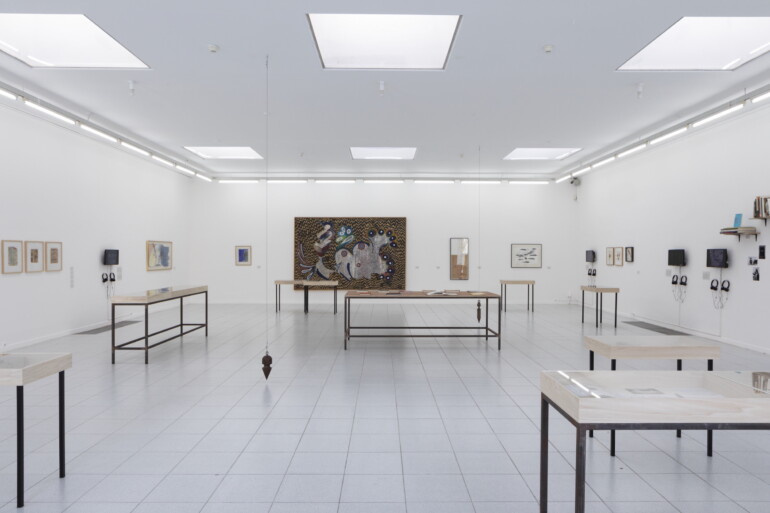Michael Buthe
Michael Buthe is considered an important artist in the European avant-garde between the sixties and the eighties. He became famous for his large-scale, space-filling installations mixing Western, Eastern, and African cultures. In a dialectical tension between uninhibited, improvisational excesses and judiciously smart poetry, Buthe created drawings, paintings, assemblages, collages, diaries, films, photographs, and works in textiles that could be combined in various ways. Driven by an associative intuition for archetypal forms, symbols, and colours, but also for perishable, often natural materials, this artist built his own universe. Buthe commuted his whole life between, among others, Cologne, Iran, and Morocco. These exotic cultures had a fundamental impact on his installations, which continued to grow in volume from the 1970s onwards. As if it were his own studio, Buthe transformed whole spaces into a complex environment in which ritual acts and magical myths fused together.
After completing his studies with Arnold Bode in Kassel, Buthe followed a masterclass with Joseph Beuys in Düsseldorf. Via Beuys, he probably met Harald Szeemann who invited him to his legendary exhibition When Attitudes Become Form (1969) in the Kunsthalle Bern. Buthe showed paintings that were transformed into sculptures by cutting up the canvas and thus exposing the structure of the wooden stretchers. In the same year, Buthe’s work was also included in Wim Beerens's equally pioneering but lesser-known exhibition Op losse schroeven: situaties en cryptostructuren in the Stedelijk Museum in Amsterdam. This was followed by an intense exhibition programme with no fewer than four Documenta editions (1972, 1977, 1982, and 1992).
